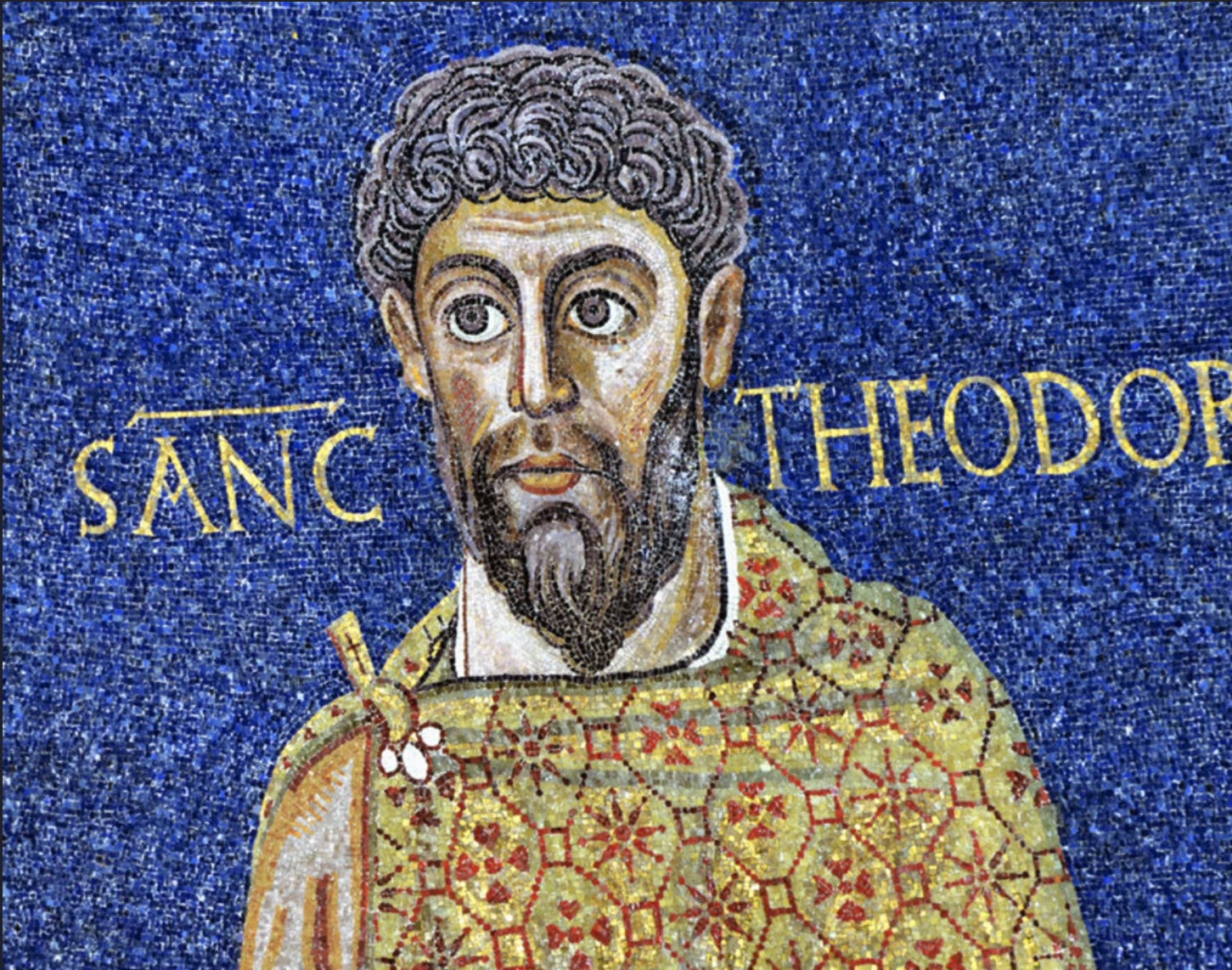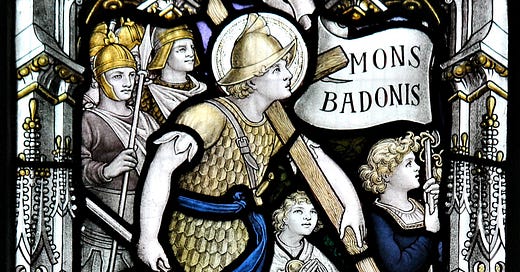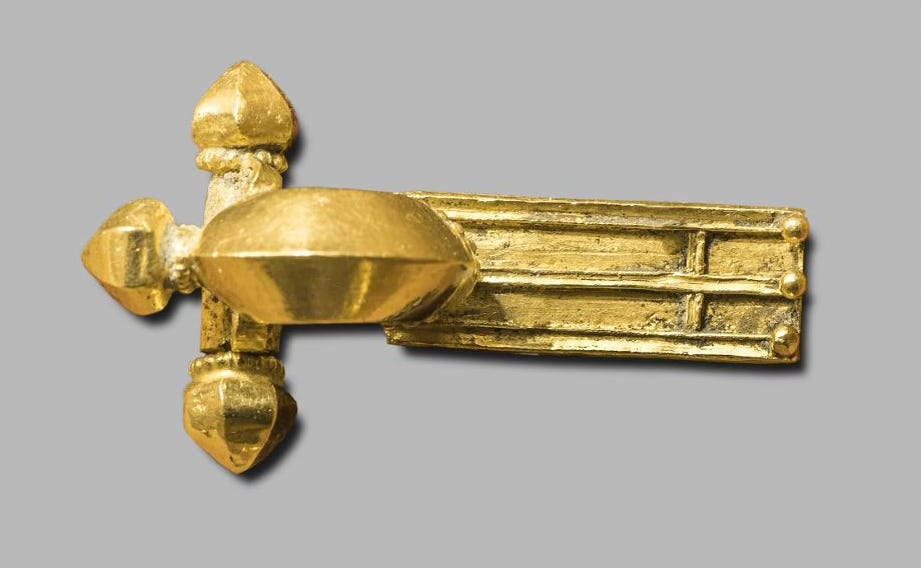Most people like to think of archaeologists as dedicated to facts and reality. A pot is a pot, a pit is a pit, a shovel is a shovel. Sober, real-world evidence is what they deal in. So why do so many of them make such outlandish claims about Arthur?
Ken Dark of King’s College London is a good example. You’d like to think he was a realist – someone who bases his theories on cold, hard facts. He writes about the fifth and sixth centuries from the perspective of the Britons, not the Anglo-Saxons. But in 1993 he declared that he “abhorred” many popular accounts of Arthur. Abhor is a pretty strong word. It means “feel hatred or disgust for”.
Dark has spent many years writing about fifth and sixth-century Britain and his most recent paper on Arthur, written in collaboration with Charlotte Dark, is on the description of Arthur in the Welsh annals leading the victorious British forces at the Battle of Mount Badon. Translated into English, the entry reads:
Battle of Badon in which Arthur bore the cross of our Lord Jesus Christ for three days and three nights upon his shoulders and the Britons were the victors.
The Darks date the authorship of the entry to the eighth century or later, as if there was no possibility that it may be a contemporary, sixth-century record of an actual event.
The Latin verb used in the entry, portavit ‘bore’, can mean ‘carried’ or ‘wore’, and ‘carried’ seems unlikely in the context of a battle. Nonetheless the Darks claim that “most previous scholars” have assumed that the reference is to the image of “a pious British war leader carrying a wooden cross on his back into battle”. Most previous scholars would not have agreed with this claim by the Darks, but Ken and Charlotte do inform their readers that there is no evidence of people carrying images of crosses into battle until a much later date.
It has long been supposed that the reference to shoulders may be a mistake because the word for shoulder in Welsh (ysgwydd) is very similar to that for shield (ysgwyd). John Morris thought that the description originally referred to a cross on a shield and most supporters of the historical Arthur have tended to agree. The use of the plural ‘shoulders’ (Late Latin humeros) does not seem to support the idea, but an early medieval copyist of the annals could have corrected an original singular to a plural, making the description sound more Biblical than it originally was. Arthur bearing an image of a cross on his shield makes considerable sense from a medieval perspective, although it doesn’t as much from an ancient one.
The Darks mention the shield theory, but they tell us “there is no evidence at all for crosses being depicted on shields in the post-Roman West prior to 829.” Before the Battle of the Milvian Bridge in 312, the Emperor Constantine reportedly saw in a vision that he would be victorious if his soldiers put a divine symbol on their shields – and coins depicting Constantine’s son Crispus with a chi-rho monogram on his shield were struck later in the fourth century. The chi-rho symbol looks a bit like a cross, but it is a monogram of the first two letters that spell Christ’s name in Greek and it was known as Christ’s monogram (monogramma Christi) in Arthur’s day. It wasn’t thought of as a cross.
Instead, the Darks suppose that what the Welsh annals “really” meant was a crossbow brooch. But they find it difficult to understand how that could have occurred. Crossbow brooches are described in that way by archaeologists because they are brooches with pronounced bows in them whose heads have small arms that stick out – a bit like a cross (or a crossbow), but not really. Some crossbow brooches also have Christian crosses worked into them as decoration – like an example from the late fifth century found in Rome that is conserved in Stockholm. But the Darks don’t mention that small detail. Their main issue seems to be that crossbow brooches aren’t known from sixth-century Britain, not to mention the seventh or eighth centuries. This is the real problem with the brooch theory apparently.
But crossbow brooches were used during the fifth century in Britain – the crossbow theory is only a problem if you have decided that Arthur didn’t exist. A crossbow brooch found in the nineteenth century near the Moray Firth in Scotland may even date from as late as the year 460. Crossbow brooches like that found in Scotland seem to have been awarded by Roman emperors to successful commanders, the most recent examples dating from the late sixth century. If the Battle of Mount Badon occurred in the late fifth century, Arthur could easily have worn a crossbow brooch on his shoulder. He could even have just worn a crossbow brooch as an heirloom – something he inherited from his father or grandfather. He could also have worn one in 516, the date the Welsh annals record for the battle. The passage in the Welsh annals makes considerable sense from a chronological perspective if it refers to a brooch with a cross on it.
The Darks can’t quite come to grips with Arthur actually wearing a brooch on his shoulder. They think that the description in the Welsh annals may have been some sort of late memory of a sixth-century Byzantine practice. After all, there is a mosaic in Ravenna that depicts the sixth-century Emperor Justinian wearing a crossbow brooch – not one with a cross on it though.
According to the Darks, the passage in the Welsh annals couldn’t possibly be referring to something like the Moray Firth brooch – something actually found in Britain that dates to the same century as most historians date the Battle of Mount Badon to. It couldn’t be a real recollection of something that actually happened. Arthur never existed, so that would be absurd.

If the Darks had looked a bit further, however, they might have discovered that a mosaic in the Basilica of Saints Cosmas and Damian in Rome depicts St Theodore wearing a crossbow brooch on his shoulder that is decorated with a cross – and the mosaic dates to the early sixth century. They may even have discovered that crossbow brooches decorated with Christian symbols are pretty common fifth and sixth-century finds. A bow brooch with a rho-cross on it was even discovered in the 1950s in Sussex. It’s been dated to the early fifth century and it seems to have been manufactured in Britain. Conserved in the British Museum, it has been suggested to represent “an insignia of dignity for a native man of position who, in a period of the decline of governmental power, used the [rho-cross] as a well-established and recognized symbol of divine and public authority in order to additionally legitimize his position.” Sounds a lot like something Arthur might have done, doesn’t it?
Yet a brooch with a rho-cross on it conserved in the big museum in the very city you work in evidently doesn’t count. The Darks assume that it’s just not possible that Arthur could have worn a brooch with a cross on it into battle. They should know – Ken’s a professor of archaeology who wrote his PhD on the fifth and sixth centuries.
The reference in the Welsh annals to Arthur bearing a cross on his shoulders seems to be evidence that the entry is reliable. If the author of the entry meant a brooch decorated with a cross, it’s likely to be a genuine historical record. Arthur could just have worn something like a cloak with a cross embroidered on it, but why not a brooch? The brooch from Sussex seems to be pretty good evidence that fifth-century British leaders did wear brooches decorated with crosses on their shoulders.
The symbol used on the cover of Morris’s Age of Arthur is a rho-cross. It was chosen by the cover designer to symbolise the Arthurian period because rho-crosses were a typical Christian symbol used during the fifth century. Morris was not aware of the existence of the Sussex brooch, but it clearly supports what he wrote about Arthur (and not what the Darks claim).







Unless there is a second brooch, the chi tho brooch in the BM is from Sussex rather than Suffolk. I've looked into the BM files here and they are not helpful regarding any further data. Given the evidence for Romano- British continuity in Selsey ( Shapland 2024) , in a late 5th century hall north west of Chichester and in Highdown Hill (Harrington et al , forthcoming) , West Sussex is quite possible as a find spot . A fascinating and unique brooch.